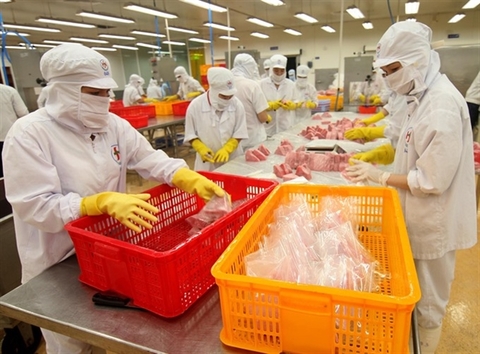Viet Nam targets private-sector development
Viet Nam targets private-sector development
Viet Nam needs to develop a strategy to promote the development of the private sector over the next decade to maintain growth, speakers said at a conference on socio-economic development from 2021 to 2030 held in HCM City last week.

Dr Vu Thanh Tu Anh, dean of the Fulbright University Vietnam’s Fulbright School of Public Policy and Management, said with the current global uncertainty, it would be difficult to achieve the target of average GDP growth of 7 per cent over the next decade unless the country focuses on the development of the private sector.
Anh is also a member of the Prime Minister’s Economic Advisory Group.
“Private firms, mostly small- and medium-sized enterprises, are considered the spearhead of the economy, but their contributions remain modest due to a lack of supportive policies,” he said. “It’s important to offer them fairness in accessing economic resources.”
Dr. Tran Du Lich, a member of the Prime Minister’s Economic Advisory Group, said the country would not be able to achieve the target unless it mobilises all resources for economic development over the next decade as the population is getting older.
“The proportion of the working age population has begun to decline and this trend will continue in the next decade. There is no country with an aging population that can grow rapidly. I am concerned we will be old before we can get rich.”
Dr. Nguyen Ba An, a member of the Editorial Group of the 13th National Congress of the Communist Party, said it was important to continue to reform administrative procedures to help remove barriers for private enterprises.
Dr Vu Tuan Anh, lecturer at the National Economics University, noted that private enterprises’ contribution to GDP remains modest at less than 10 per cent. In comparison, the FDI sector contributes about 20 per cent to GDP.
This is a problematic economic structure, making it difficult for private firms to develop.
Experts recommended that, for a normal economy, the contribution of the private sector to GDP should be around 60-70 per cent.
Anh, the dean at Fulbright University, said more than 96 per cent of private firms are micro and small size, so their resilience to external shocks remains weak, making it difficult to connect to the global value chain.
Statistics from the Ministry of Planning and Investment last year showed only 15 per cent of private enterprises are suppliers to FDI enterprises in the country. More than 8 per cent are likely to export directly, and 7.4 per cent can export indirectly through a third country.
He said the Government should reform the governance system of State-owned enterprises, and stop providing bailouts or financial support to any State-owned business or project that encounters prolonged heavy losses.
“For attraction of FDI, priority should be given to domestic private enterprises to connect to supply networks of leading multinational corporations in the country. The domestic private sector should play a major role in the economy,” he said.
The private sector altogether contributes around 40 per cent to the country’s GDP, of which some 32 per cent is from household-based businesses and only eight per cent from private firms. State-owned enterprises contribute around 28 per cent, according to statistics from the Ministry of Planning and Investment.
State-owned enterprises and business households are the two major contributors to GDP, but they both have problems in capacity. Household-based businesses are of small scale, while State-owned enterprises lack efficiency in operation, the ministry said.
Viet Nam’s private sector has more than 700,000 firms and 5.2 million business households.
The meeting was organised by the Institute of Development Strategy under the Ministry of Planning and Investment in coordination with the United Nations Development Programme (UNDP) in Viet Nam.



























